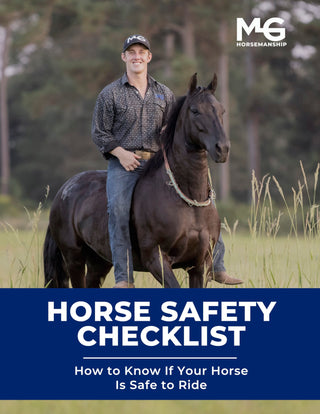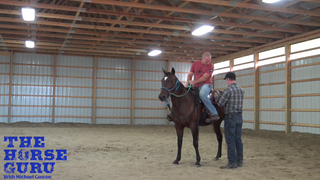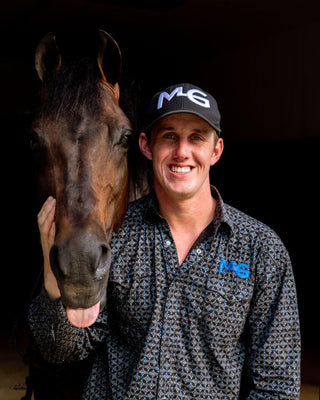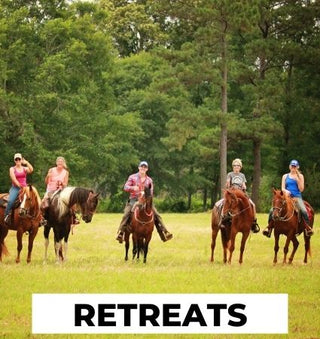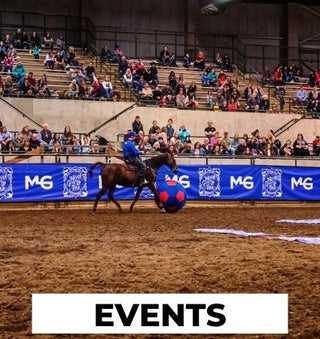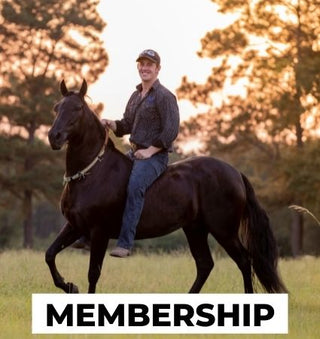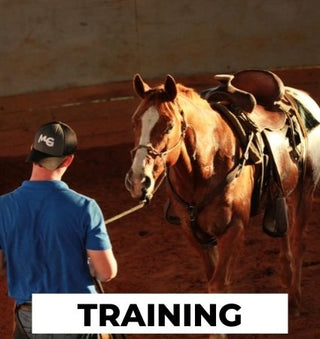Watch the Video Here or continue reading below!
Trail riding should be an enjoyable experience, but negative horse behaviors such as biting, kicking, or being buddy sour can turn a pleasant ride into a stressful situation. Many riders look for a quick fix to these problems, but the truth is that these behaviors are symptoms of a deeper issue—lack of respect and attention from your horse.
Understanding the Root of the Problem
When your horse displays negative behaviors on the trail, it's easy to focus on the behavior itself rather than addressing the underlying issue. Common trail problems include:
-
Biting other horses
-
Kicking out on the trail
-
Buddy sour behavior
-
Barn sour tendencies
-
Being too “studdy” or affected by a mare in heat
These behaviors are not standalone issues; they stem from a fundamental lack of respect and attention. Instead of trying to fix each problem separately, focus on reinforcing basic horsemanship skills.
The Importance of Respect and Attention
A horse that respects you and gives you their undivided attention is far less likely to engage in negative behavior. When your horse looks to you for direction rather than reacting to their environment, they will remain calm and focused, regardless of external distractions.
A respectful horse:
-
Listens to their rider instead of paying attention to other horses.
-
Responds willingly, whether they are naturally lazy or high-energy.
-
Remains calm, regardless of gender, hormones, or herd dynamics.
Changing Your Horse’s Mindset on the Trail
Rather than viewing your horse as a pet, think of them as an obedient working partner. Your horse should always be looking to you for the next command, just as a well-trained dog does.
How to Regain Your Horse’s Attention:
-
Use Flexing to Redirect Focus – If your horse flicks an ear toward another horse or seems agitated, gently flex their head to regain control.
-
Reinforce Fundamentals – Practice exercises such as bending, backing, or stopping to remind your horse that you are in charge.
-
Maintain a Leadership Mindset – If your horse misbehaves, don’t hope they won’t act up—be confident in your ability to correct them.
Why Variables Shouldn’t Matter
Many riders worry about environmental changes affecting their horse’s behavior. Whether the temperature drops suddenly, other horses are misbehaving, or you’re on an unfamiliar trail, your horse should remain responsive.
Think of it like driving in traffic: you can’t control other cars, only your own. If your horse respects you, external factors won’t disrupt your ride.
Correcting Negative Trail Behavior
If your horse starts to act out, the best correction is an exercise they struggle with. This practice of controlled failure forces them to focus and engage their mind.
Steps to Address Bad Behavior:
-
Identify the exercise your horse finds most difficult.
-
Use that exercise as a correction when they misbehave.
-
Repeat the exercise often to build skill and respect.
The more you reinforce proper behavior through consistent corrections, the more your horse will learn to respect you on the trail.
Conclusion: Building the Perfect Trail Horse
By going back to the fundamentals and ensuring your horse respects you, negative trail behaviors will disappear. One day, you’ll realize your horse has transformed into the perfect riding partner—calm, focused, and responsive.
Want More Horse Training Tips?
Let us know in the comments what challenges you face on the trail! We’re here to help you build a stronger bond with your horse and reach your riding goals.


